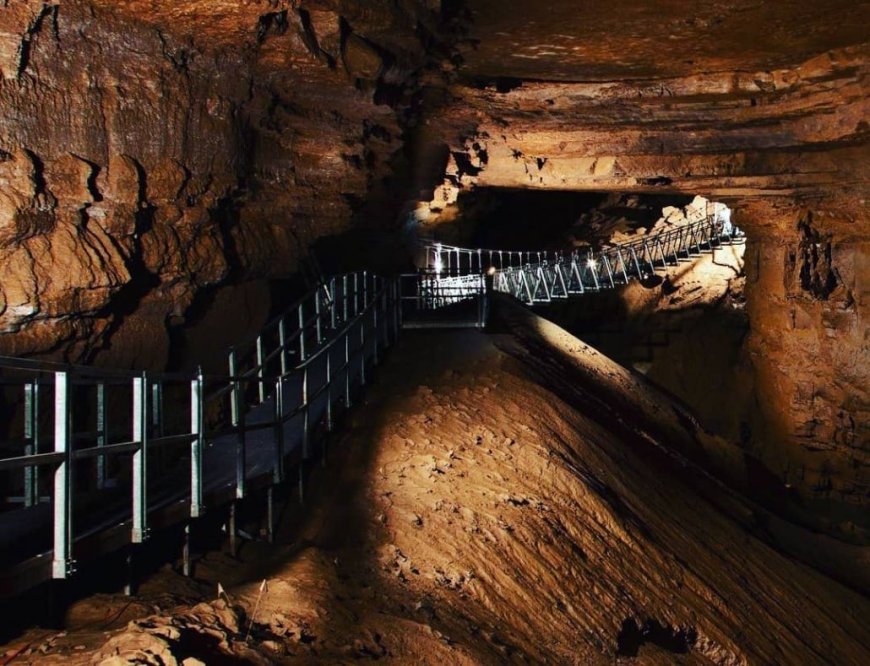Kentucky’s Hidden River Cave Revival: Eco-Tourism Opportunities After Cleanup
Discover how Kentucky’s Hidden River Cave transformed from polluted ruin to eco-tourism destination, driving biodiversity recovery and local economic growth.

A Forgotten Cave, Rediscovered
Hidden beneath the small town of Horse Cave, Kentucky, lies the Hidden River Cave—once a source of local pride and then, tragically, a symbol of environmental neglect. For decades, untreated sewage and industrial waste poured into the subterranean waters, rendering the cave unfit for exploration. Locals recall the overwhelming stench that lingered in downtown Horse Cave well into the 1980s, when cleanup seemed more like wishful thinking than an achievable goal.
But today, after years of environmental restoration, the Hidden River Cave is making a remarkable comeback. No longer an ecological cautionary tale, it now stands as a beacon of sustainable eco-tourism in the American South.
From Pollution to Preservation
The transformation of the Hidden River Cave is nothing short of dramatic. In the mid-20th century, the cave system was so polluted that residents abandoned all hope of using it for recreation or tourism. Cleanup efforts began in earnest in the late 1980s, with the help of organizations like the American Cave Conservation Association (ACCA).
Experts point to several key changes:
-
Sewage Diversion Systems: By redirecting untreated waste away from the cave, water quality began to rebound within a decade.
-
Bioremediation Projects: The introduction of microorganisms capable of breaking down pollutants restored ecological balance.
-
Community-Led Cleanups: Volunteers removed tons of debris, transforming the cave from a dumping ground into a protected habitat.
According to biodiversity surveys conducted in 2024, aquatic invertebrates, salamanders, and bat populations are showing encouraging signs of recovery. “The resurgence of these species is a living metric of the cave’s healing process,” said Dr. Mark Sullivan, a biologist at Western Kentucky University.
Eco-Tourism Potential in Rural Kentucky
The revival of Hidden River Cave presents not just an ecological victory but also an economic opportunity for the region. Horse Cave, with a population of under 3,500, has historically struggled with economic stagnation as manufacturing jobs disappeared. Tourism, centered on the cave, is reshaping that narrative.
Projected Benefits for the Community:
-
Visitor Influx: Early estimates suggest that annual visitors could increase from 20,000 to 60,000 within five years.
-
Job Creation: Local businesses—restaurants, lodges, and craft shops—stand to benefit, potentially creating over 200 new jobs.
-
Educational Programs: The cave’s revival has attracted schools and universities interested in ecology tours, offering a new revenue stream.
Comparisons are being made to the economic transformation seen in nearby Mammoth Cave National Park, where eco-tourism contributes millions to local economies each year.
Personal Stories of Transformation
For residents, the revival is deeply personal. Linda Carter, a third-generation Horse Cave resident, remembers when her grandfather would warn children not to play near the cave. “It wasn’t just dirty; it was dangerous,” she recalled. Today, Carter runs a small bed-and-breakfast that caters to tourists coming to explore the cave. “The cave gave us back our town’s identity,” she said.
Tour guides now emphasize both the natural beauty and the cautionary history of pollution, framing Hidden River Cave as both a wonder and a lesson in environmental stewardship.
Challenges Ahead
Despite the progress, challenges remain. Climate change poses threats in the form of flooding, which could reintroduce contaminants into the cave system. Additionally, balancing tourism with conservation requires careful oversight. Overcrowding, unchecked development, and commercial exploitation could undo decades of restoration work.
Conservation groups are calling for:
-
Visitor Caps during peak seasons.
-
Sustainable Infrastructure, such as eco-friendly lighting and controlled access routes.
-
Continued Monitoring, with annual biodiversity surveys and water quality tests.
A Model for Rural Eco-Tourism Nationwide
Hidden River Cave’s revival is more than a Kentucky story—it is a template for other rural communities across the U.S. where natural resources have been neglected or polluted. By blending environmental stewardship with economic opportunity, Horse Cave is demonstrating that small towns can build futures rooted in sustainability.
For those interested in eco-tourism, educational resources from the National Park Service and environmental updates from Environmental Protection Agency provide deeper insights into how local ecosystems can be restored and harnessed responsibly.
Conclusion
The story of Hidden River Cave is one of redemption: a once-polluted natural treasure, written off as lost, now thriving again. Its revival speaks to the resilience of nature and the determination of communities when science, policy, and grassroots efforts converge.
Horse Cave may never rival the grandeur of Mammoth Cave, but in many ways, its comeback story is more powerful. It proves that even the most damaged environments can recover—and that small towns can stake their futures on the natural world.











